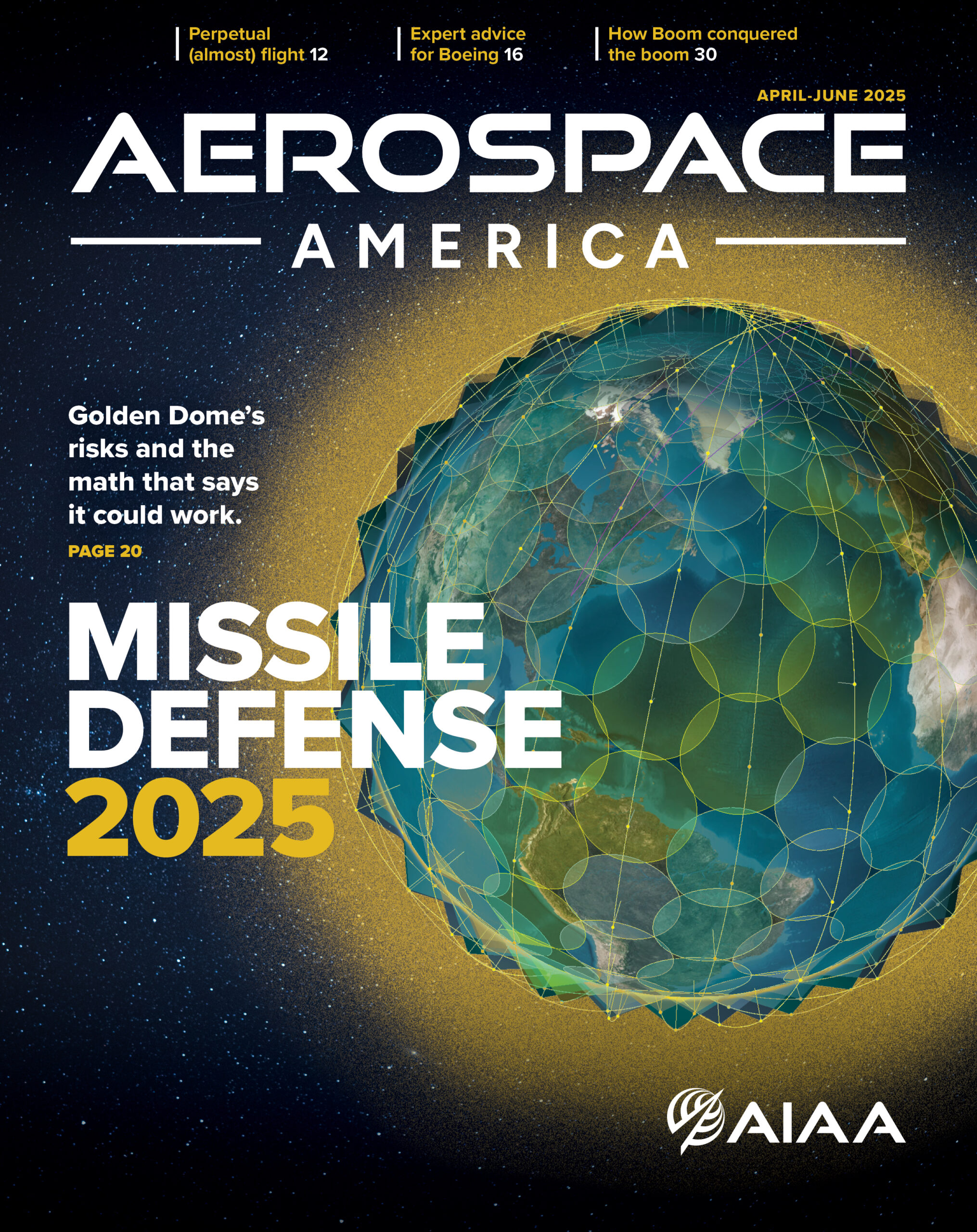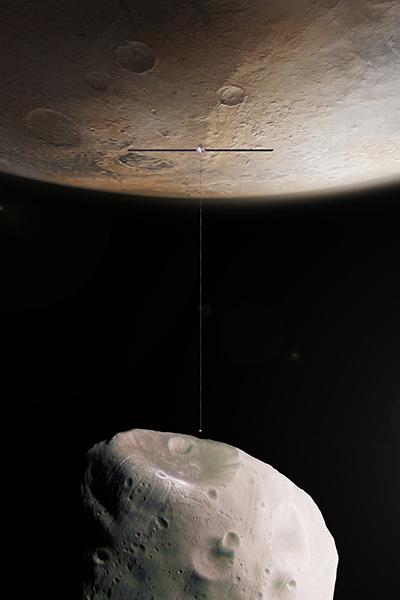Stay Up to Date
Submit your email address to receive the latest industry and Aerospace America news.
The Space Tethers Technical Committee focuses on the development and use of tether-based technology for space systems.
A number of novel mission concepts enabled by space tethers were proposed in 2017.
A research team from the Massachusetts Institute of Technology and Airbus DS Space Systems — in cooperation with the University of Padova in Italy — in February completed tether experiments in microgravity using the Synchronized Position Hold, Engage, Reorient, Experimental Satellites, or SPHERES, on the International Space Station. The testing focused on understanding the dynamics of a satellite pair connected by a nonconductive tether.
Under a NASA Innovative Advanced Concepts Phase 1 award, NASA’s Langley Research Center in Virginia and its partner Star Technology and Research in June began a study of the Phobos L1 Operational Tether Experiment. The PHLOTE spacecraft will perform long-term hover mode operations at the Mars–Phobos Lagrangian 1 point and suspend a tethered sensor platform that can “float” just above the moon’s surface. If desired, the tethered sensors can be placed directly on the surface for detailed measurements of the regolith. L1s are unstable orbital locations; active control is needed to stay there. The PHLOTE mission will incorporate the Navigation Doppler Lidar sensor for precise relative position and rate knowledge along with high-efficiency electrospray thrusters for propulsion. Adjusting the tether length supports station keeping and minimizes propellant consumption.
Researchers at NASA’s Goddard Space Flight Center outlined in August the Bi-sat Observations of the Lunar Atmosphere above Swirls mission concept. A “sky crane” of two cubesats would lower one of the satellites toward the lunar surface on a 180-kilometer tether so it could orbit about 10 km above the lunar surface to investigate swirling patterns in more than 100 locations.
With support from the Canadian Space Agency, researchers at York University developed a mission concept this year called Deorbiting Spacecraft using Electrodynamic Tethers to demonstrate the deorbit of space debris by electrodynamic tethers. Two 1U cubesats connected by a 100-meter tape-type tether will be launched from the ISS in 2019.
In May, researchers at Penn State described a concept for “embodied energy repurposing” via energy-harvesting electrodynamic tethers. The concept proposes transferring the orbital energy of unused spacecraft or debris to the electrical subsystem of another spacecraft. The transfer of energy would simultaneously power the useful spacecraft while deorbiting the other.
Under two NASA Innovative Advanced Concepts awards, researchers at NASA’s Marshall Spaceflight Center performed a series of plasma chamber tests of electric sail propulsion systems. Electric sail propulsion is enabled by the deployment of multiple 20-km-length, 0.2-millimeter-diameter tethers. Work has focused on experimental plasma chamber testing to provide data against which to benchmark; an electric sail spacecraft particle-in-cell theoretical model being developed by the University of Alabama in Huntsville; mission design work; development, investigations and experimentation of simulated space tether deployment; and conceptual design of an Electric Sail Technology Demonstrator Mission spacecraft. The electric sail mission is comprised of two identical 6U cubesats deployed together from a spacecraft in cislunar space. Each spacecraft has 8,250 meters of conductive tether that will be deployed via a cold gas propulsion system and, once deployed to the 16,500-meter length, those thrusters will add a radial component of thrust in an equal and opposite direction to enable the system to rotate about the tether midpoint at five to 10 revolutions per day.
In October, the Miniature Tether Electrodynamics Experiment led by the University of Michigan was finishing development of a custom high-voltage electron collection and emission system and a Langmuir Probe for plasma characterization. It is scheduled to launch in 2018 as part of NASA’s CubeSat Launch Initiative.
Related Posts
Stay Up to Date
Submit your email address to receive the latest industry and Aerospace America news.




